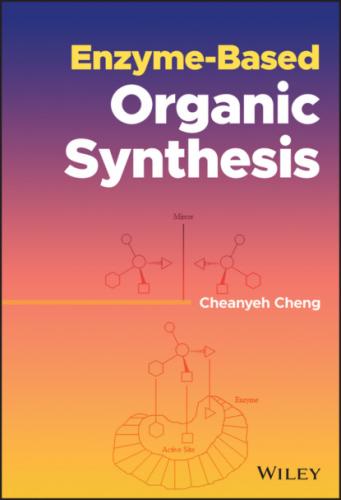In the past, the complexity of cofactor recycling has made the majority of the asymmetric reduction of activated C=C performed using whole fermenting cells, mostly baker’s yeast and anaerobic bacteria. For example, whole cell of baker’s yeast (S. cerevisiae) has been broadly used for the stereospecific reduction of many compounds containing activated carbon‐carbon double bond such as monoterpenes and sesquiterpenoids [179]. Since terpenes and terpenoids exhibit a wide variety of pleasant and floral scents, these properties make them extensively used in the perfumery and food industries. Monoterpenes and sesquiterpenoids, the chief components of the essential oils, not only act as precursors for new flavor derivatives but also are important building blocks for the preparation of new biologically active natural product drugs.
Scheme 2.40 Asymmetric reduction of activated alkene substrates catalyzed by OYE enzymes.
ERs used for asymmetric reduction of electronically activated C=C bonds, with a few exceptions, almost exclusively are isolated from Saccharomyces spp. yeasts, particularly, from the domesticated species S. cerevisiae. However, baker’s yeast just represents a small fraction within the vast yeast kingdom. Recently, Buzzini et al. carried out a screening on 23 so‐called nonconventional yeasts (NCYs) belonging to 21 species of the genera Candida, Cryptococcus, Debaryomyces, Hanseniaspora, Kazachstania, Kluyveromyces, Lindnera, Nakaseomyces, Vanderwaltozyma, and Wickerhamomyces for the whole‐cell bioreduction of α,β‐unsaturated ketones and aldehydes. Results show that extremely high yields (>90%) or even total bioconversion yields for the asymmetric reduction of the conjugated C=C bond of ketoisophorone (KIP) and 2‐methyl‐cyclopentanone (2‐MCPO) were catalyzed by ERs in a few NCYs. The catalytic efficiency of these NCYs declined for aldehydes [(S)‐(−)‐perillaldehyde ((S)‐PA) and α‐methyl‐cinnamaldehyde (MCA)]. The NCY whole cells were in lyophilized form and glucose was used for NAD(P)H cofactor recycling system [180].
Although the use of whole fermenting cells for the asymmetric reduction of activated alkenes can avoid the difficulty of cofactor recycling, the chemoselectivity for C=C was often low by the competing reduction of C=O with the carbonyl reductases in the cell. Therefore, purified ERs accompanied by the necessitating regeneration system for the nicotinamide cofactor [NAD(P)H] were employed to solve the problem of low chemoselectivity. The efficiency of the cofactor recycling is thus an important factor to determine both the yield and selectivity of the asymmetric bioreduction of activated C=C. A highly efficient, inexpensive, and robust ADH‐coupled NADH‐recycling system has been developed recently based on the concurrent oxidation of a sacrificial sec‐alcohol 2‐propanol to acetone by the solvent‐stable ADH Rhodococcus ruber thereby providing a hydride via NADH to recycle the flavin cofactor of the ene‐reduction catalyzed by ERs [181]. This highly NADH‐recycling system has been applied to a variety of activated alkenes: α‐methylmaleic acid dimethylester, 4‐ketoisophorone, 2‐methylcyclohexanone, 2‐methylcyclopentenone, 2‐methylpent‐2‐enal, and citral. For α‐methylmaleic acid dimethylester, the conversion is quantitatively (>99%) and highly stereoselectively reduced to (R)‐dimethyl‐α‐methyl‐succinate with an excellent e.e. (>99%) by employing Zymomonas mobilis nicotinamide‐dependent cyclohexenone reductase (NCR) reductase; the conversion is 90% and an e.e. > 99% is obtained by employing B. subtilis YqjM (Scheme 2.41).
It was reported that indirectly regenerating YqjM or NemA (N‐ethylmaleimide reductase from E. coli) of reduced nicotinamide cofactors can be simplified by an efficient and convenient direct regeneration of catalytically active reduced flavins with the cell‐free bioreductions of activated conjugated C=C double bonds. In this process, reducing equivalents are provided via photocatalytic oxidation of a lot of simple sacrificial electron donors such as phosphite, formate, ethylenediaminetetraacetate (EDTA) [182]. Even when using crude cell extracts, the chemoselectivity of the photoenzymatic reduction was exclusive, only C=C double bond reduction without altering the ketone or aldehyde groups was observed. Up to 65% rates of the NADH‐driven reaction can be got while still preserving enantioselectivity.
Due to the production of 1 : 1 product mixture and unfavorable equilibria, disproportionation reactions generally are rarely used in organic synthesis. However, recent study shows that the nicotinamide‐independent disproportionation of enones can be used as a co‐substrate for the asymmetric bioreduction of activated C=C bonds to eliminate the need for an NADH‐recycling system. In this simplified system, the activated C=C bonds were catalyzed by a single flavoprotein and a sacrificial 2‐enone or 1,4‐dione was used as hydrogen donor for a direct hydrogen transfer without the requirement of nicotinamide cofactor. This strategy has been successively applied for the reduction of C=C bond in citraconic acid dimethylester to produce (R)‐dimethyl‐2‐methylsuccinate with either 3‐methylcyclohex‐2‐enone or cyclohexane‐1,4‐dione as co‐substrate (Scheme 2.42) [183]. Other substrates such as 4‐ketoisophorone and N‐phenyl‐2‐methylmaleimide have also been successfully tested for the applicability to produce (R)‐levodion and (R)‐N‐phenyl‐2‐methylsuccinimide, respectively.
Scheme 2.41 Asymmetric reduction of α‐methylmaleic acid dimethylester with Z. mobilis or B. subtilis.
A novel ER isolated from the bacterium Z. mobilis termed NCR reductase and OYEs 1–3 from yeast of Saccharomyces spp. were extended to use for the asymmetric reduction of a variety of activated C=C substrates. The activating groups in the investigated substrates include aldehyde, ketone, imide, nitro, carboxylic acid, and ester moieties. To control the stereospecificity of the reaction, strategies such as variation of the main substrate structure (cyclic vs. acylic), switching the (E/Z) configuration of the alkene moiety, modifying the substitution pattern (mono‐ vs. di‐, α‐ vs. β‐), or proper selection of the enzyme are utilized to allow the access to the opposite enantiomeric products. Results showed that reaction rates and stereoselectivities can be varied by different substrate type. The “substrate‐based stereocontrol” is related with the ring size of cycloalkenones, position of substituents on the C=C bond, and its E/Z configuration. The “enzyme‐based stereocontrol” was observed with nitroalkene in which the opposite enantiomeric products can be obtained by both NCR reductase and OYEs 1–3 [184].
Baker’s yeast (BY) catalyzed enantioselective reduction of an EWG substituent activated double bond such as α,β‐unsaturated aldehydes and ketones are generally very efficient with high enantioselectivities and conversions. However, it is necessary to explore the synthetic capability of the yeast‐based ER for other activated substrates to make the enantioselective synthesis toolbox more fruitful and advantageous for implementation in industrial
